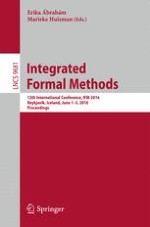2016 | Buch
Integrated Formal Methods
12th International Conference, IFM 2016, Reykjavik, Iceland, June 1-5, 2016, Proceedings
herausgegeben von: Erika Ábrahám, Marieke Huisman
Verlag: Springer International Publishing
Buchreihe : Lecture Notes in Computer Science
